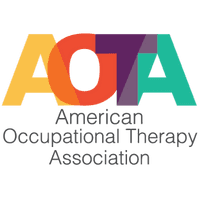How to Talk to Your Child About Their ADHD Diagnosis

A guide to help parents navigate an important conversation with confidence and care.
If you're reading this, you're already doing something powerful—you’re trying to show up for your child in the best way possible. Many parents feel unsure about how to talk to their child about an ADHD diagnosis. It can feel overwhelming, emotional, and hard to know what to say or where to begin.
Take a breath. You're not alone.
In this post, we’ll walk you through why this conversation matters, what not to say, and how to confidently approach the conversation using clear, compassionate language that empowers your child.
Why Should I Talk to My Child About Their Diagnosis?
Many parents worry that naming a diagnosis like ADHD will label their child, create self-doubt, or damage self-esteem. But research—and real-life experience—shows the opposite. When a child understands what’s going on in their brain, they gain clarity, not shame.
Here’s why it’s important to talk about it:
Your child already knows they’re different. Without explanation, they may assume something is wrong with them.
Understanding brings relief. When you name the challenge, you also name the support. It’s no longer about “bad behavior,” it’s about how their brain works.
You build trust. Being open and honest builds your relationship and sends the message: “We’re in this together.”
You help them advocate. Over time, your child will need to speak up for what they need at school, with friends, or in other environments. This is their first step.
What Not to Say
When emotions run high, it’s easy to say too much—or say the wrong thing. Here’s what to avoid:
❌ Don’t focus only on what’s wrong
ADHD isn’t just a list of deficits. It comes with strengths, too.❌ Don’t use medical jargon
Terms like “disorder” or “executive dysfunction” may confuse or scare your child.❌ Don’t minimize their experience
Avoid saying things like “It’s no big deal,” or “Everyone has trouble paying attention.”
What To Say: A Simple Formula for the Conversation
Here’s a step-by-step way to talk about ADHD in a way your child can understand and relate to:
✅ 1. Start with Their Strengths
Begin by reminding your child of what makes them amazing. This sets a positive tone.
“I love how curious you are. You ask the best questions. You have so many great ideas and you’re always making us laugh.”
✅ 2. Acknowledge the Struggles
Talk about the things that feel hard—gently and without blame.
“I’ve also noticed that sometimes schoolwork feels really hard, especially when it’s boring or takes a long time. And getting started on chores can feel tricky.”
✅ 3. Name It
Now that you’ve laid the foundation, you can introduce the word “ADHD.”
“I’ve been learning more about something called ADHD. It describes a way some brains work—brains that are amazing at certain things, but also need help in others.”
✅ 4. Reassure and Support
Let them know you’re here, and that help is already in place.
“You’re not alone. We’re going to work together as a team. I’m here to help, and so is your teacher and your OT. You’ve got a whole team behind you.”
Helpful Phrases You Can Use
“ADHD means your brain notices lots of things at once.”
“Your brain is great at coming up with ideas—but sometimes it needs help getting started.”
“There are lots of amazing people with ADHD—athletes, artists, actors, even inventors!”
Use Real-Life Analogies to Explain ADHD
One of the most powerful ways to talk to your child about their ADHD diagnosis is through relatable analogies. Using everyday experiences that reflect your child’s interests can help them understand what ADHD feels like and how you’ll support them moving forward. Here are three analogies you can choose from or adapt to your child’s world:
📺 If your child enjoys watching television:
"Imagine having ADHD is like being a television remote control where the buttons sometimes get stuck."
Most of the time, the remote control works well. You can press the buttons to change the channel or adjust the volume, and everything works just like it should—just like you do so many things well.
However, sometimes the remote control doesn’t work smoothly. Maybe the button doesn’t respond, and you can’t switch channels, or it gets stuck and changes channels too fast. Maybe the volume changes too quickly and gets very loud unexpectedly.
That is what having an ADHD brain can be like. Much of the time, things go well and as planned, but sometimes the brain's remote control doesn’t work smoothly. Things might get too loud, or it might be hard to make changes or stay focused.
Just like we want the remote control to work smoothly, we can help your brain’s remote control feel more in control. I/we will help you learn to do those things.
🏎️ If your child enjoys cars:
"Imagine having ADHD is like driving a race car on a high-speed track."
The race car is powerful and full of potential—just like you. It’s fast and skilled at quick turns, just like you're great at [insert strengths like high energy activities, creativity, or quick thinking].
But the race track is filled with twists and turns and unexpected obstacles. The driver has to stay focused, be flexible, and make quick decisions.
Having ADHD is like being that race car driver. You have to work a little harder to stay focused, sit still, listen, and make good decisions—especially when things come fast or feel overwhelming.
Just like a skilled race car driver learns how to handle the car and the track, I/we will help you learn how to handle your amazing brain so you can succeed.
🎼 If your child enjoys playing an instrument or music:
"Imagine your brain as the music teacher or orchestra conductor."
The conductor is responsible for coordinating all the instruments—just like your brain is responsible for coordinating your thoughts, emotions, and actions.
If the conductor is disorganized, inattentive, or too fast, the music comes out messy or offbeat. Similarly, when your brain has a hard time paying attention or staying calm, things might feel chaotic or out of sync.
But just like a conductor can learn to guide the orchestra smoothly, you can learn to guide your brain more calmly and clearly. I/we will help you learn to regulate your thoughts and emotions so everything can work in harmony.
Final Tips:
Pick a calm, quiet time to talk—not when emotions are already high.
Keep the conversation ongoing. This isn’t a one-and-done chat.
Check in with your child regularly: “How did that feel to talk about?” “What questions do you have?”
At Kinspire, We’re Here to Help
Talking to your child about ADHD is a major parenting moment—but you don’t have to do it alone. Kinspire’s licensed occupational therapists specialize in supporting families navigating ADHD, sensory processing, emotional regulation, and daily routines.
We’re here to help you make sense of your child’s needs and build a personalized plan to support them every single day.
✨ Ready for support that understands the whole picture?
📋 Complete our Family Discovery Assessment
📞 Book a free consultation with a licensed occupational therapist
Let’s navigate this journey—together.




